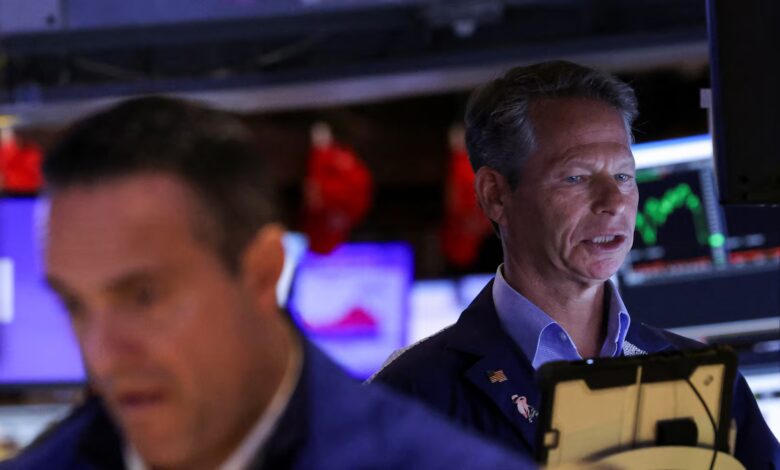Stocks mixed, gold hits record as US government shuts down

Sign up here.
While weak employment data would typically add to bets on interest rate cuts that could support equity markets, the outlook became less clear with this week’s government shutdown.
“However you want to look at it … it’s a weakening labor market and the Fed is likely to continue on their cutting path through year-end in our view,” said Matthew Miskin, co-chief investment strategist at Manulife John Hancock Investments in Boston. “Not having other data points does make this harder for the Fed.”
Gold prices climbed to $3,895 an ounce, hitting a record high for a third straight session, while the benchmark U.S. 10-year Treasury yield fell 5 basis points to 4.1%.
The healthcare sector has the third largest weighting in the STOXX 600.
“There’s a lot of political risk in the healthcare sector, but as you see this risk ease, investors will be buying,” said Lars Skovgaard, senior investment strategist at Danske Bank.
“I think this could give some support to European shares over the next couple of days.”
SHUTDOWN TO DELAY DATA
Without Friday’s nonfarm payrolls report, investors may place greater weight on the ADP National Employment Report.
“The general idea is that these things have a short-term impact, not a long-term one, and markets know it,” said George Lagarias, chief economist at Forvis Mazars.
“The lack of data will mean we assume the trend we have will continue. If there is no evidence of a strong economic rebound, then the chances are that the Fed will continue on its present course.”
Futures now imply a 95% chance of a Fed rate cut in October, up from 90% from a day earlier, with around a 75% probability of another move in December.
Anthony Saglimbene, chief market strategist at Ameriprise, said that if the shutdown persists, September inflation reports in mid-October could also be affected.
“An extended period where the U.S. Bureau of Labor Statistics is not operating at full strength could affect data collection efforts for other reports, which may impact the quality of the data,” he said in a note.
DOLLAR FALLS
In foreign exchange markets, the dollar index slipped for a fourth straight day and was last down 0.1% to 97.78.
The euro was unchanged at $1.1729, while sterling was up 0.2% at $1.3478.
Oil prices fell further after two consecutive days of losses as investors weighed potential OPEC+ plans for a larger output hike next month.
U.S. crude was down about 0.7% at $61.93 a barrel, while Brent was 0.8% lower at $65.5.
Reporting by Samuel Indyk, Koh Gui Qing, Stella Qiu and Ankur Banerjee; Editing by Mark Potter, Nick Zieminski and Richard Chang
Our Standards: The Thomson Reuters Trust Principles.
Credit: Source link





